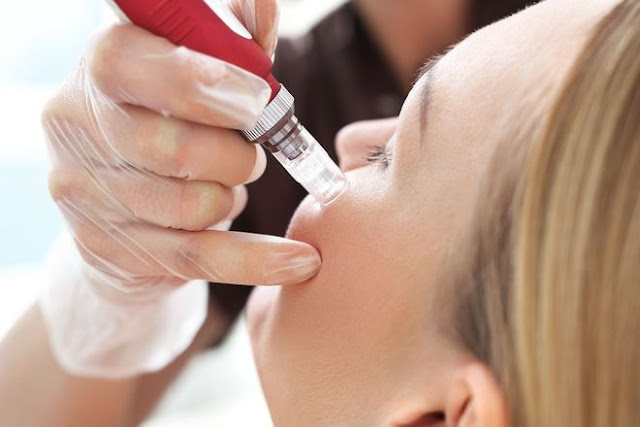Ways To Treat Dislocated Kneecap | Dr. Vishal Kodgirkar
Dr. Vishal Kodgirkar says regardless of whether you are a competitor or a ballet artist, you will welcome the significance of having a steady kneecap. Medicinally known as the patella, the kneecap is a triangular bone that interfaces the upper thigh to the lower half of the leg. It sits in a depression in the base of the femur (thigh bone). At the point when the leg is bowed, it remains inside the notch. At the point when the leg is expanded, it offers help to the quadriceps muscles.
That being the situation, a separation of the kneecap is extremely normal damage. Subluxation is where there is fractional development of the kneecap out of its position, in this manner making the patient's kneecap unsteady. When it totally moves out of its place, it is known as separation. Regardless of whether you fall on your knees amid a game or have a tumble from a bicycle or get harmed amid move or vigorous exercise, usually to have a disjoined kneecap. A few people are inclined to rehashed disengagements.
Side effects:
The underlying damage is excruciating and there might likewise be harm to the encompassing structures.
Different side effects include:
1. Clasping of the knee, where your legs can't bolster your body weight
2. Sliding of the kneecap to a side
3. Catching of the knee ready when attempting to move it
4. Torment in the front of the kneecap with any action
5. Difficult while sitting
6. Swelling and additionally firmness of the knee joint
7. Popping/squeaking sound when endeavoring to move the knee joint
8. Powerlessness to rectify the leg
Treatment:
Despite the fact that these sound frightening, fortunately, in 90% of the cases, the knee comes back to its position suddenly. Be that as it may, returning it to its place is a straightforward and safe method and should be possible by practically any prepared restorative specialist. The initial step is to affirm that the kneecap is to be sure disengaged. This should be possible by a mix of physical exercise and x-beam. Whenever required, MRI can be utilized, yet it isn't required much of the time.
Introductory treatment would incorporate the accompanying strides in grouping:
1. Immobilizing the knee with support by keeping the leg in a rectified position.
2. Calling for medicinal help right away. They can supplant the knee back in its position cautiously (decrease). A harmed kneecap can cause what is known as foot drop by putting weight on the peroneal nerve. The toes delay the ground, making it troublesome for you to walk.
3. Use ice in the influenced zone for 15 to 20 minutes, and rehash following three to four hours for the duration of the day to diminish torment and swelling.
4. Careful rectification may not be required if there is a harm to the tendon.
5. Level femur, as well as tissue laxity, can cause rehashed separations, where physiotherapy and fortifying activities are helpful.
That being the situation, a separation of the kneecap is extremely normal damage. Subluxation is where there is fractional development of the kneecap out of its position, in this manner making the patient's kneecap unsteady. When it totally moves out of its place, it is known as separation. Regardless of whether you fall on your knees amid a game or have a tumble from a bicycle or get harmed amid move or vigorous exercise, usually to have a disjoined kneecap. A few people are inclined to rehashed disengagements.
Side effects:
The underlying damage is excruciating and there might likewise be harm to the encompassing structures.
Different side effects include:
1. Clasping of the knee, where your legs can't bolster your body weight
2. Sliding of the kneecap to a side
3. Catching of the knee ready when attempting to move it
4. Torment in the front of the kneecap with any action
5. Difficult while sitting
6. Swelling and additionally firmness of the knee joint
7. Popping/squeaking sound when endeavoring to move the knee joint
8. Powerlessness to rectify the leg
Treatment:
Despite the fact that these sound frightening, fortunately, in 90% of the cases, the knee comes back to its position suddenly. Be that as it may, returning it to its place is a straightforward and safe method and should be possible by practically any prepared restorative specialist. The initial step is to affirm that the kneecap is to be sure disengaged. This should be possible by a mix of physical exercise and x-beam. Whenever required, MRI can be utilized, yet it isn't required much of the time.
Introductory treatment would incorporate the accompanying strides in grouping:
1. Immobilizing the knee with support by keeping the leg in a rectified position.
2. Calling for medicinal help right away. They can supplant the knee back in its position cautiously (decrease). A harmed kneecap can cause what is known as foot drop by putting weight on the peroneal nerve. The toes delay the ground, making it troublesome for you to walk.
3. Use ice in the influenced zone for 15 to 20 minutes, and rehash following three to four hours for the duration of the day to diminish torment and swelling.
4. Careful rectification may not be required if there is a harm to the tendon.
5. Level femur, as well as tissue laxity, can cause rehashed separations, where physiotherapy and fortifying activities are helpful.



Comments
Post a Comment